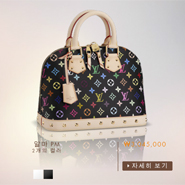- About
- Subscribe Now
- New York,
May 9, 2013

Approximately 60 percent of luxury brands offer a Web site for Korean consumers, compared to 96 percent for consumers in China and 87 percent for consumers in Japan, according to L2 Think Tank’s series of Digital IQ Index Reports.
The Digital IQ Index: Korea and the Digital IQ Index: The Gateways, which comprises Hong Kong, Taiwan and Singapore, found that although the Asia-Pacific area is one of the world’s wealthiest regions, luxury marketers are not making themselves accessible to these consumers via digital media. Although many luxury brands are invested in China, marketers need to have a presence in other nearby areas to reach their full global potential.
“This area leads the world in Internet infrastructure and mobile penetration, and the world’s wealthiest regions are also among the hungriest for luxury,” said Emma Li, research lead at L2 Think Tank, New York.
“Surprisingly, just more than half of prestige brands operate local sites serving these markets, with the exception of Japan,” she said.
“However, despite being one of the world’s largest traditional luxury markets, Japan has lower brand site adoption than China.”
The Digital IQ Index: Korea analyzed the digital performance of 95 global and five local prestige brands in South Korea. The brands were ranked 30 percent on site, 25 percent on social media, 25 percent on mobile and 20 percent on digital marketing.
The 2013 Digital IQ Index: The Gateways assessed the digital performance of 100 global and local brands focusing on three key markets: Hong Kong, Singapore, and Taiwan. The brands were ranked on site, social media, mobile and digital marketing.
Breaking into the market
Asia-Pacific is a strong region for luxury goods and services. However, there are some up-and-coming areas where luxury marketers should have a presence.
Even with the global economic downturn, luxury sales in South Korea have increased 12 percent year over year since 2006, per L2.
Overall, it seems as though luxury marketers are not investing enough resources into their marketing in South Korea.
Less than 25 percent of brands surveyed offer ecommerce in South Korea. Out of the 28 brands with ecommerce, 39 percent of those sites link to a third-party retailer. Out of those brands that do not offer ecommerce, only 14 percent show local pricing on their sites.
Korean third-party retailer Lotte
Furthermore, 23 percent of brands surveyed offer a mobile site for South Korean consumers.
Only Swarovski, Kiehl’s and Estée Lauder made the top 10 list in L2’s Digital IQ Index: Korea.
Brands may find it difficult to get into the South Korean market due to the heavy competition from local brands.
“While global prestige brands are reluctant to invest digitally in these regions, they are facing robust competition from local players,” Ms. Li said.
“International brands constitute only 15 percent of the South Korean beauty market, and we have seen successful multi-faceted campaigns moving beyond the simple tactics used by most global brands for their Facebook campaigns,” she said.
“A dearth of localized content and understanding of local consumer culture are major hurdles for global brand marketers in these regions.”
The gateways
The gateway areas can be important places for luxury marketers to make an impact on consumers.
Chinese consumers are responsible for approximately 32 percent of global luxury consumption, but two-thirds of their purchases occur outside the mainland.
Also, Chinese travelers are estimated to account for 60 percent of Hong Kong’s luxury sales in 2013, while Taiwan and Singapore will also be reaping those benefits, per L2.
Burberry's Web site is available for Taiwanese consumers
Many luxury brands are strong in the gateway areas while quite a few brands are included in the top 10 lists across the three areas.
Louis Vuitton, BMW, Gucci, Hermès, Balenciaga, Audi, Chanel and Lexus are included in the top 10 in Taiwan, while Chanel, Louis Vuitton, BMW, Prada, Mercedes-Benz, Rolex, Ferrari and Gucci are in Hong Kong’s top 10 list.
Also, Chanel, BMW, Rolex, Louis Vuitton, Audi, Prada, Christian Dior and Hermès are on the top 10 list for Singapore.
Many of the same brands that are doing well in the gateway areas are also dominating in Japan (see story) and China (see story).
“Investment in these markets caters not only to local consumers, but also benefits sales driven by rising demand from tourists hailing from the biggest luxury neighbor, China,” Ms. Li said.
“The gateways offer limited digital infrastructure for Chinese tourists to conduct research on local information about brands,” she said.
“Beyond store locators, pricing transparency, wish lists and full product info with social media sharing functionality, prestige brands could offer more to assist purchases, such as options for ordering online and picking up offline.”
Final take
Erin Shea, editorial assistant on Luxury Daily, New York
Share your thoughts. Click here